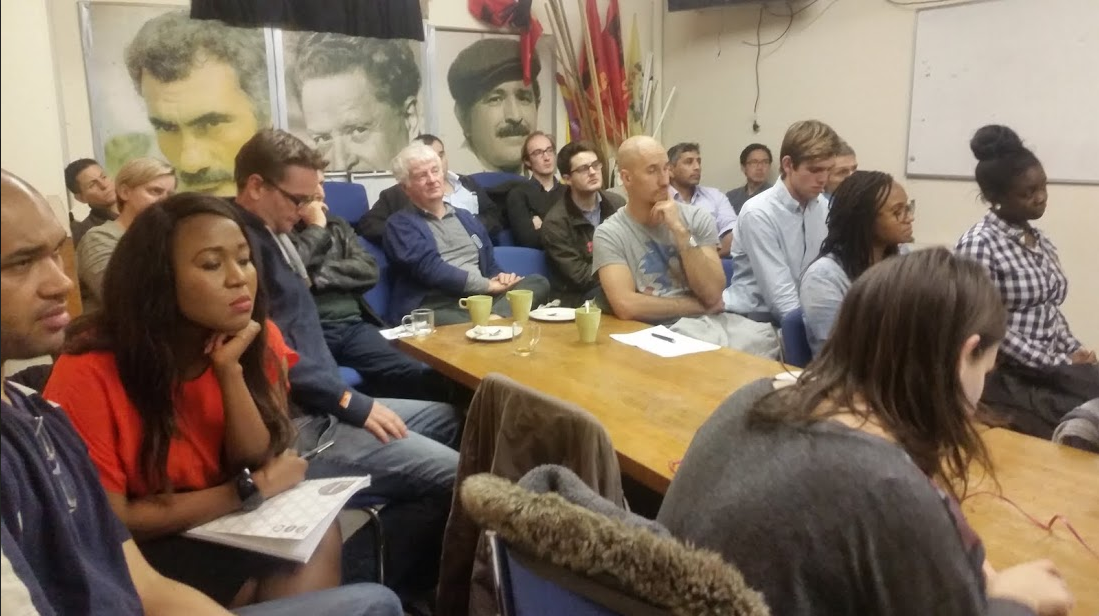People’s Quantitative Easing. What on earth is it?

People’s Quantitative Easing, or PQE for short. What on earth is it? As it’s QE for the people in particular, shouldn’t the people know how it works?
If you’ve heard of it, it’s probably because it’s a policy idea being proposed by the new Labour party leader Jeremy Corbyn. Depending on what you’ve read or heard in the media, it’s either a useful way to inject cash into parts of the economy that need it most, or another fanciful concept dreamt up by left wing extremists that will bring about the next apocalypse.
As one of the ‘people’ this quantitative easing was supposedly for – and as I didn’t want to be quantitatively eased unnecessarily – I thought I owed it to myself to go past the headlines, and understand a bit more about it. Positive Money Hackney’s November meeting was my chance to do just that.
And it seemed I was not alone in my thinking. The basement room of the Gorki House Café on Stoke Newington High St was completely full, one of the best turnouts the Hackney group has seen.

Proceedings kicked off with John giving a brief summary of the ideas and aims of Positive Money, followed by Alexis providing a concise introduction to the concept of quantitative easing, its function and effects on the economy.
Frank, a researcher from Positive Money, then took over and explained in more detail how QE worked, and the main differences between QE and people’s QE, as proposed by Corbyn.
For me, what helped was Frank’s clear explanation at the outset of some important accounting principles, which he would refer back to throughout the talk. He also gave us two useful questions to bear in mind when comparing different QE proposals: Does it boost private sector incomes without increasing net debt? Is the QE reversible or irreversible?
Along the way Frank dispatched some of the myths surrounding PQE.
Rather than a preserve of the left, it was originally a right wing idea proposed by free market economists when “they realised the banking system makes the free market imperfect”.
He also challenged the claim that QE would necessarily cause hyperinflation:
“Inflation occurs when you have more money chasing the same or less amount of goods and services. If you have money creation that increases productivity, yes you have more money but you also have more goods and services…the supply of both increases in tandem, so you don’t necessarily have to have inflation.”
The questions prompted by the evening’s presentations were as many as they were diverse. Is there a limit to how often QE can be used? How does Corbyn’s QE money get into the productive elements of the economy, such as existing industries? Why can’t we simply give every man on the street a share of the £445bn? An equally diverse discussion ensued.
I must admit struggling to follow parts of the discussion. But as Frank said, the aim of the evening was to expand our technical knowledge just a little further, so when we next read a newspaper or article, our understanding was just that much better. If this was the intended outcome of the evening, for me it was an unqualified success.
My evening ended with conversations with old acquaintances and also newcomers to the Hackney group. I hadn’t been in a while and connecting again with the network was enjoyable and inspiring as always. I got the chance to meet Stan, Positive Money’s new international coordinator, and learnt the exciting news that the first pan-Europe meeting of monetary reform campaign groups was to be held next February in Brussels.
Before I knew it, we were quantitatively easing our belts and wallets in the pub to get some much needed food and liquidity (thanks should go to Teena for the pun).